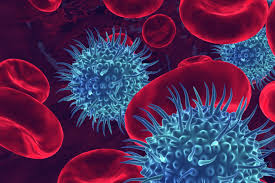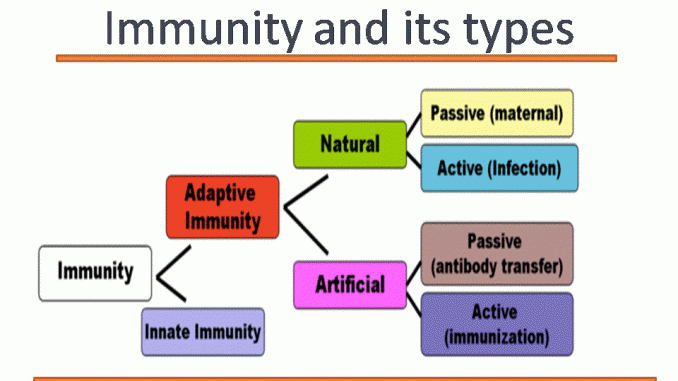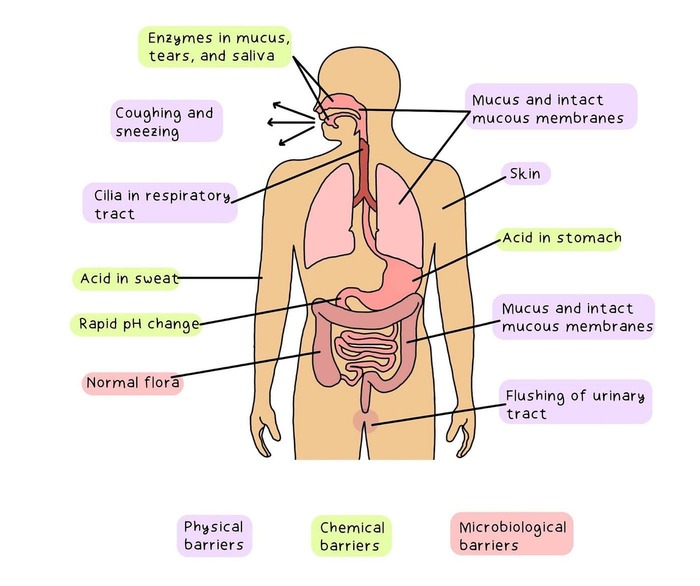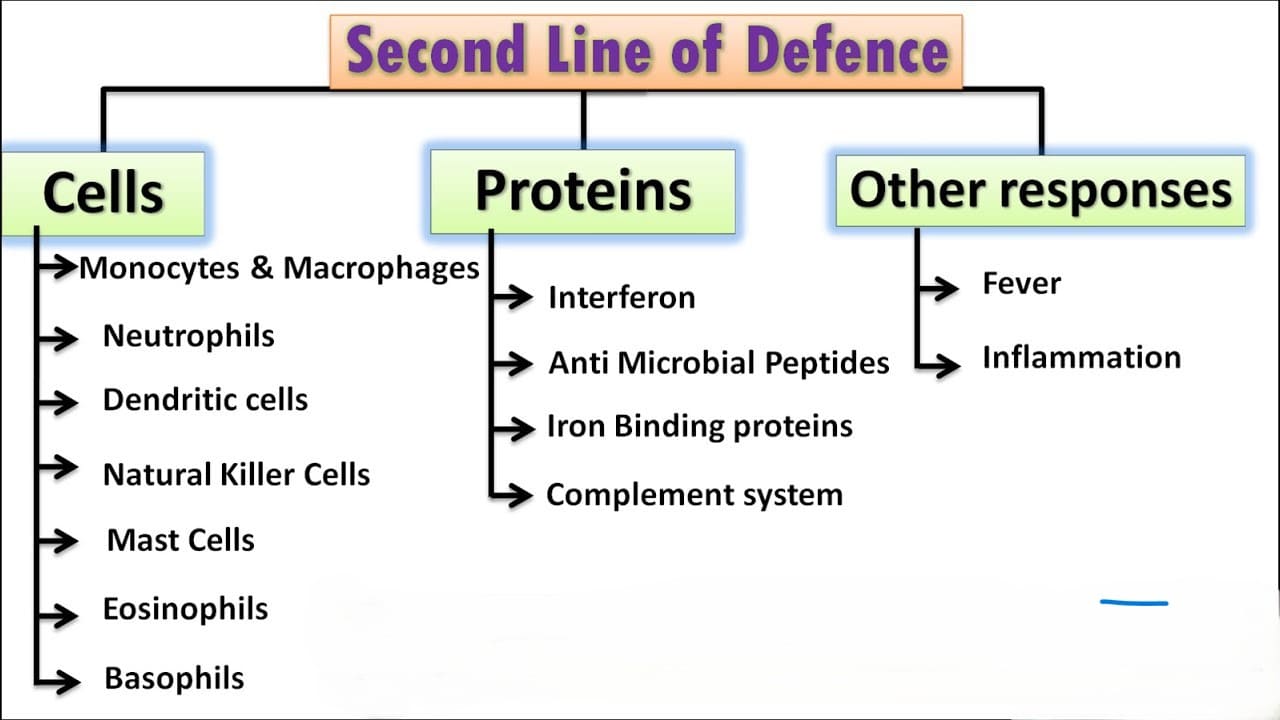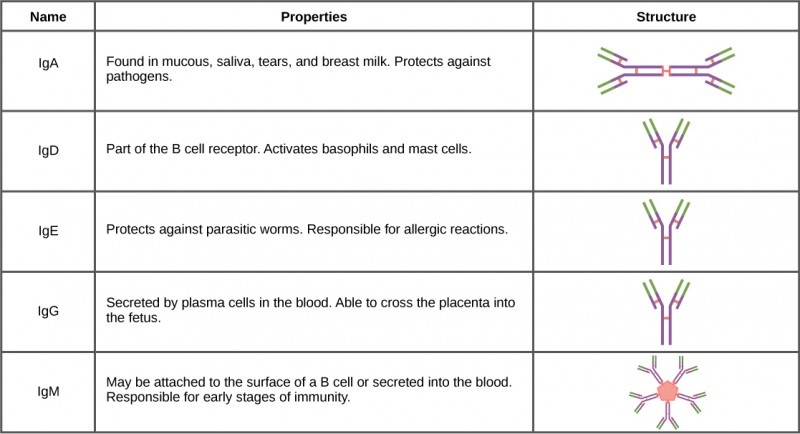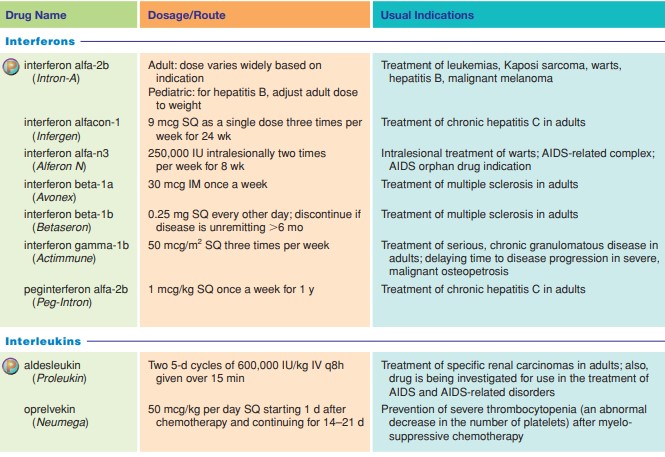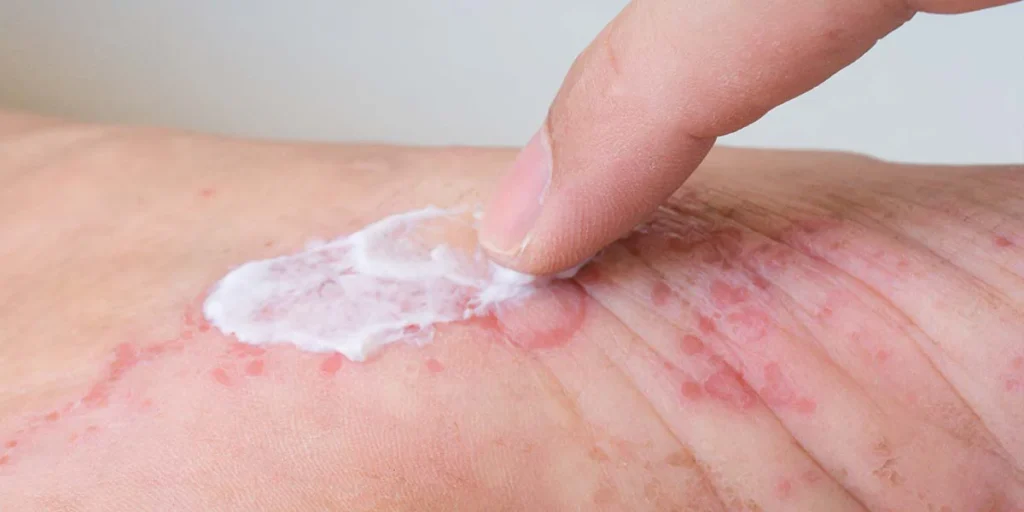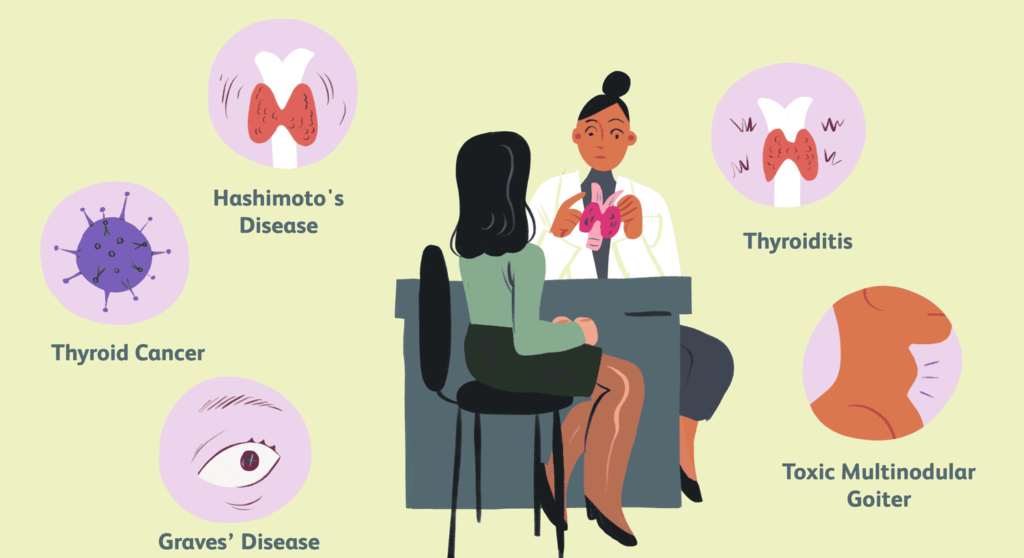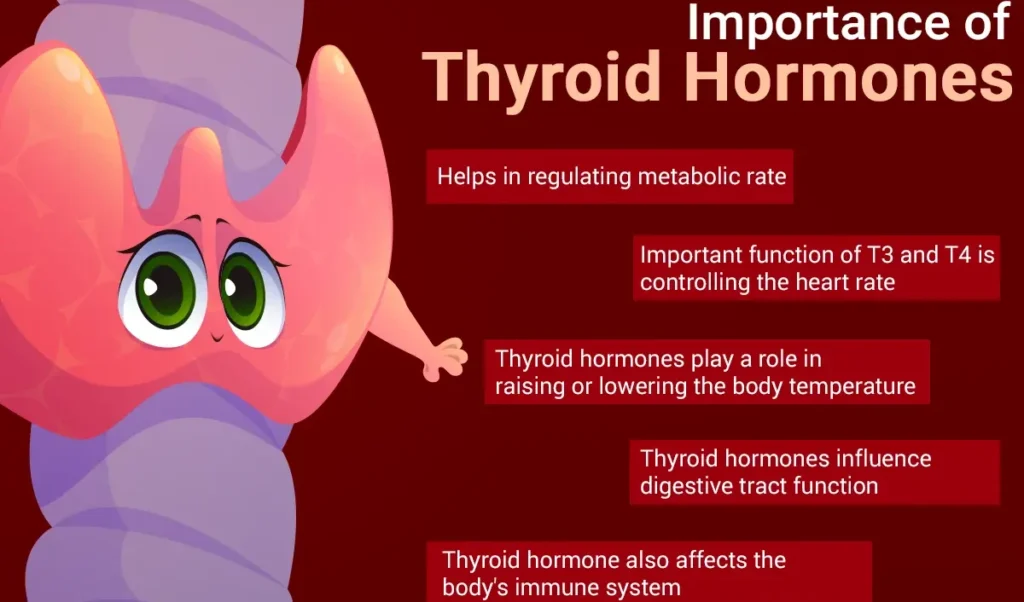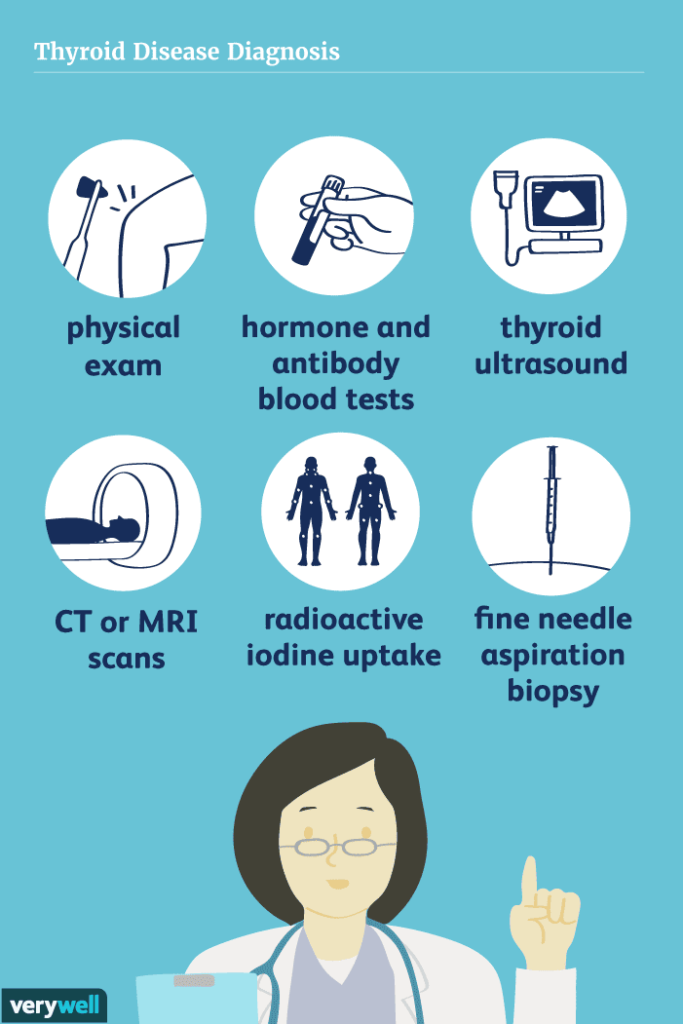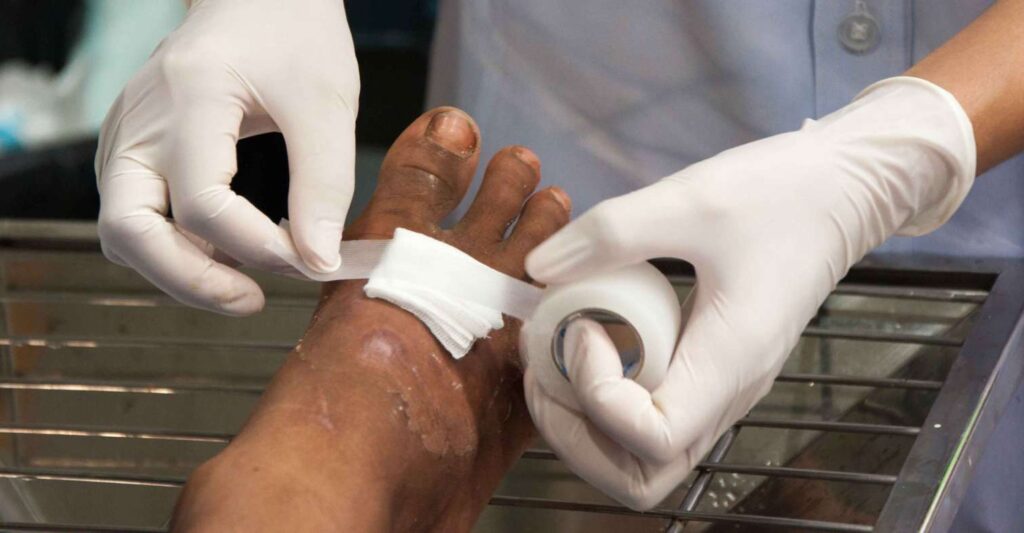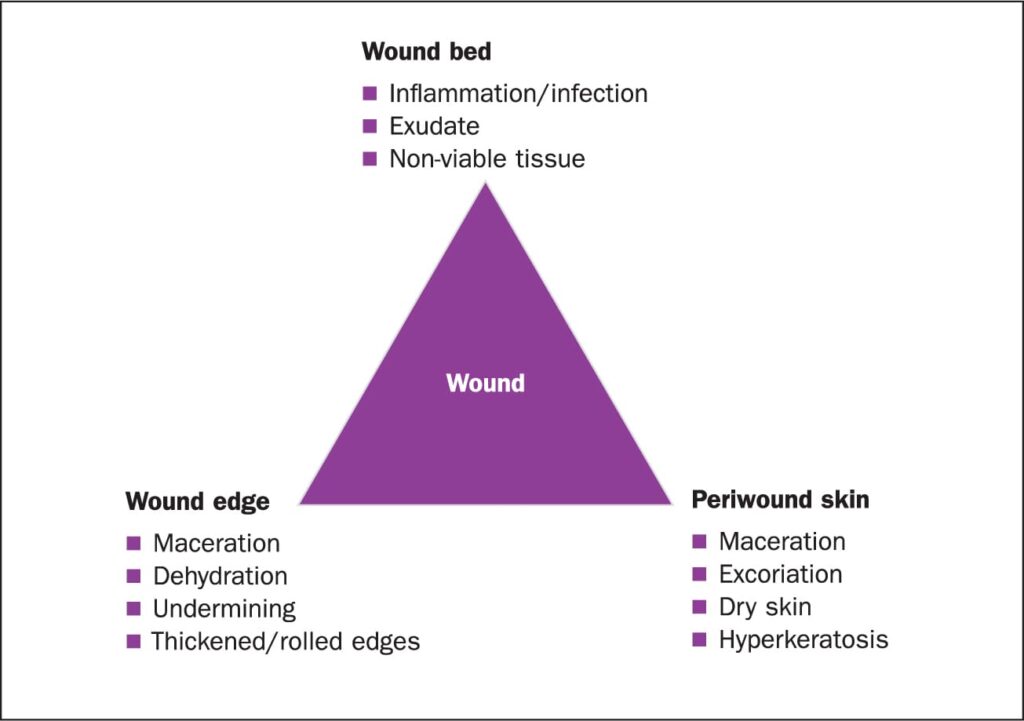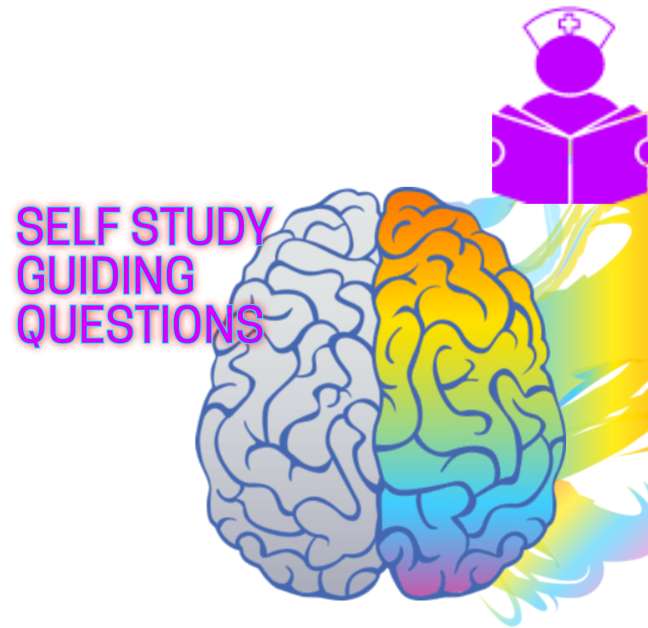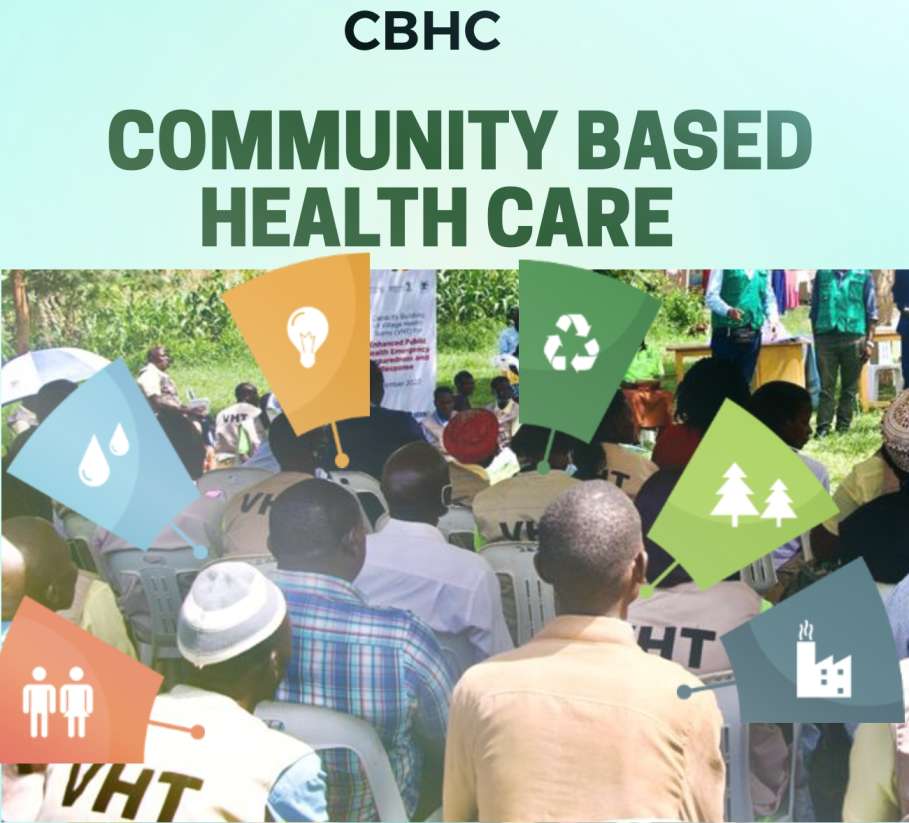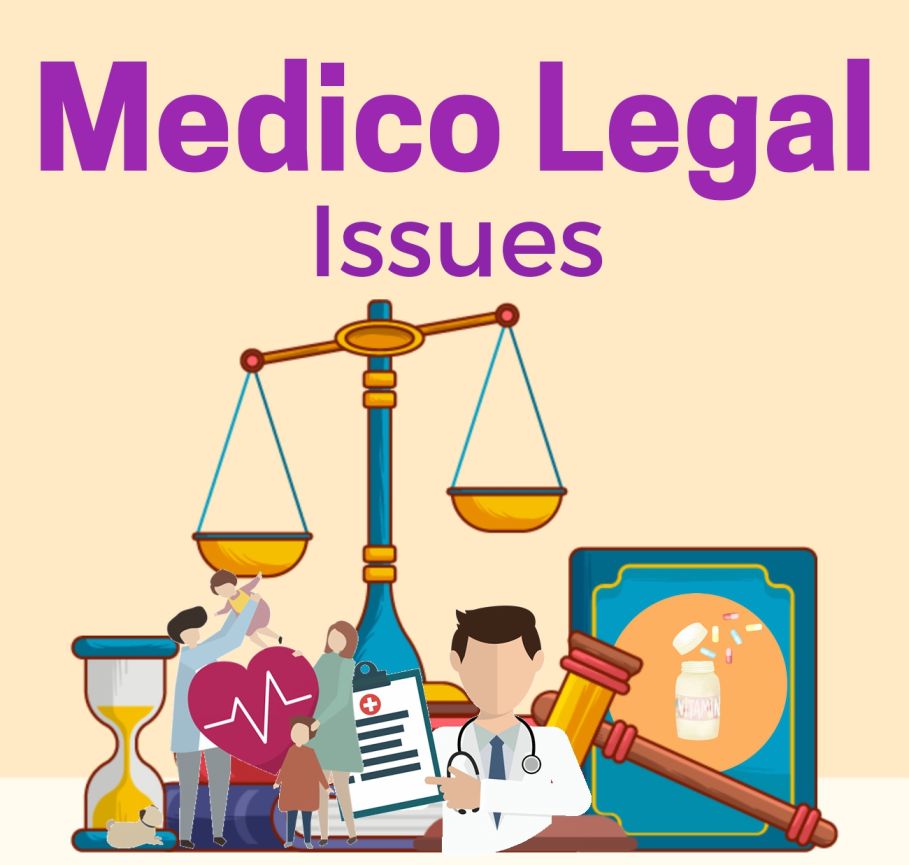Immunization
Immunization
Immunization is a process of deliberate inoculation of live attenuated or dead vaccines and toxoids to induce immunity against a specific disease. Immunization against a specific disease provides artificially acquired active immunity. The principle of immunization is to increase specific immunity to infection by administration of either immune serum (passive immunization) or by administration of an antigen (active immunization).
Artificially acquired immunity against some diseases may require periodic booster injections to keep an adequate antibody level (or antibody titer) circulating in the blood. A booster injection is the administration of an additional dose of the vaccine to boost the production of antibodies to a level that will maintain the desired immunity. The booster is given months or years after the initial vaccine and may be needed because the life of some antibodies is short.
Types of Immunization Agents
- Toxoids: is a toxin that is attenuated (or weakened) but still capable of stimulating the formation of antitoxins.
- Vaccines: Special preparations of antigenic materials that can be used to stimulate the development of antibodies.
- Immune Globulins: Preparations containing antibodies against infectious micro-organisms, usually prepared from human plasma or serum.
- Antisera: Sterile preparations containing immunoglobulins obtained from the serum of immunized animals by purification. They have the power of neutralizing venoms or bacterial toxins.
Active vs. Passive Immunization
The principal goal of immunization is to increase specific immunity to infection. This can be achieved through two main strategies: active immunization and passive immunization.
Passive Immunization
Passive immunization is the administration of already active antibodies to prevent or ameliorate infection. It gives immediate protection but immunity lasts for a short period of time. Passive immunisation is used in post-exposure prophylaxis in immunocompetent hosts when immediate protection is required following exposure to the infection e.g. tetanus.
Infections for which passive immunization is useful are:
- Hepatitis B
- Rabies
- Tetanus
- Diphtheria
Advantages of passive immunisation:
- Passive immunisation can be lifesaving if toxin is already circulating.
- Prompt availability of large amount of antibodies.
Disadvantages of passive immunisation:
- Protection is short-lived (up to 6 months) as the borrowed antibodies are eventually degraded and cleared.
- Use of human antisera has dangers of transmitting infections like HIV or Hepatitis.
- Antisera are expensive compared to vaccines.
- They need to be kept cool and have limited life span.
Active Immunization
Active immunization is a process of increasing resistance to infection whereby micro-organisms or products of their activity act as antigens and stimulate certain body cells to produce antibodies with a specific productive capacity. It may be a natural process following recovery from an infection, or an artificial process induced by the administration of vaccines.
Active immunization is a process where the individual's own immune system is stimulated to produce antibodies and memory cells against a specific pathogen. This is achieved by administering an antigen, usually in the form of a vaccine. It may be a natural process following recovery from an infection, or an artificial process induced by vaccination.
Aims of Active Immunization:
- To protect susceptible individuals against specific infections.
- To reduce the incidence of infection in the community, leading to herd immunity.
- To eliminate an infection in a particular country or worldwide (e.g., the successful eradication of smallpox and the ongoing effort to eradicate polio).
Booster Injections:
Artificially acquired immunity against some diseases may require periodic booster injections to keep the antibody level (titer) adequate for protection. A booster is an additional dose given months or years after the primary vaccination series to "boost" the immunological memory and production of antibodies.
Advantages of Active immunization:
- Offers long-term, often lifelong, immunity due to the formation of memory cells.
Disadvantages of Active immunization:
- Has a slow onset of action, as it takes time (days to weeks) for the body to mount a primary immune response and become fully protected.
Vaccines
Vaccines are special preparations of antigenic materials designed to stimulate the development of antibodies and confer active immunity. Vaccination refers to the administration of a vaccine.
Types of Vaccines:
Live Attenuated Vaccines:
These vaccines use live microorganisms that have been weakened (attenuated) so they can still replicate but do not cause disease in healthy individuals. They typically provide long-lasting immunity with a single dose (with some exceptions like OPV).
Examples: BCG, Measles, Mumps, Rubella, Oral Polio (OPV), Yellow Fever.
Advantages of Live Attenuated Vaccines
- Live vaccines give longer protection than killed vaccines.
- One dose of the vaccine is usually sufficient with exception of oral polio vaccines.
Disadvantages of Live Attenuated Vaccines
- Live vaccines are often unstable e.g. measles and polio need to be stored at -20°C.
- Live vaccines may not work in the presence of circulating antibodies e.g. measles vaccine has to be given around 9 months of age when maternal antibodies have gone.
- Live vaccines may cause disease if the host is immuno deficient as in HIV infection.
- Live vaccines occasionally interfere with each other so that the immune response is not so great if given together.
Killed or Inactivated Vaccines:
These vaccines use whole bacteria or viruses that have been killed and can no longer replicate. They are very safe but usually require a series of injections and booster doses to produce an adequate response.
Examples: Inactivated Polio Vaccine (IPV), Rabies vaccine, Hepatitis A vaccine, whole-cell Pertussis vaccine.
Toxoid Vaccines:
These vaccines use bacterial toxins that have been chemically inactivated to become harmless toxoids. They stimulate the production of antitoxins.
Examples: Tetanus toxoid, Diphtheria toxoid.
Disadvantages: Immunity can be short-lived, requiring booster doses.
Indications of Vaccines and Toxoids:
- Routine immunization of infants and children.
- Immunization of adults against tetanus.
- Immunization of adults at high risk for certain diseases (e.g., pneumococcal and influenza vaccines).
- Immunization of children or adults at risk for exposure to a particular disease (e.g., hepatitis A for those going to endemic areas).
- Immunization of pre-pubertal girls or non-pregnant women of childbearing age against rubella and cervical cancer.
Adverse Reactions of Vaccines and Toxoids:
Adverse reactions from the administration of vaccines or toxoids are usually mild.
- Chills, Fever, muscular aches and pains, rash, and lethargy may be present.
- Pain and tenderness at the injection site may also occur.
- Although rare, a hypersensitivity reaction may occur.
Contraindications and Precautions of Vaccines and Toxoids:
- Hypersensitivity: Individuals with known severe allergic reactions to vaccine components or previous doses should not receive the vaccine.
- Vaccines and toxoids are generally contraindicated during acute febrile illnesses, leukemia, lymphoma, immunosuppressive illness or drug therapy, and non-localized cancer.
- The measles, mumps, rubella, and varicella vaccines are contraindicated in patients who have had an allergic reaction to gelatin, neomycin, or a previous dose of one of the vaccines.
- The measles, mumps, rubella, and varicella vaccines are generally contraindicated during pregnancy, especially during the first trimester, because of the theoretical danger of birth defects. Women are instructed to avoid becoming pregnant for at least 3 months after receiving these vaccines.
Antisera and Immunoglobulins
- Antisera: Sterile preparations containing immunoglobulins obtained from the serum of immunized animals (e.g., horses). They are used to neutralize venoms or bacterial toxins.
- Immunoglobulins: Preparations containing specific antibodies, usually prepared from pooled human plasma. They are used for passive immunization.
Properties of an Ideal Vaccine
- Should be able to induce an adequate and appropriate immune response without causing active infection.
- The vaccine should be safe with minimal side effects.
- The vaccine should be stable and remain potent during storage and transportation.
- The vaccine should be cheap if it is to be used on a large scale.
- It should be easy to administer.
- It should be highly purified so that it consists of one or only a few antigens.
Autoimmune Diseases
Autoimmune diseases occur when the immune system loses its ability to distinguish "self" from "non-self" and mistakenly begins to attack the body's own cells and tissues. This failure of self-tolerance can be triggered by a combination of genetic susceptibility, environmental factors, and infections.
It is thought that female hormones like estrogen may enhance the inflammatory response, which could be one reason why autoimmune diseases are often more common or severe in women than in men.
Autoimmune Diseases and Parts Affected
| Disease | Part of the Body Primarily Affected |
|---|---|
| Rheumatoid Arthritis | Cartilage and linings of the joints. |
| Graves' Disease | Thyroid gland (causes hyperthyroidism). |
| Insulin-Dependent Diabetes Mellitus (Type 1) | Insulin-producing beta cells of the pancreas. |
| Multiple Sclerosis (MS) | Myelin sheath of nerves in the brain and spinal cord. |
| Psoriasis | Skin cells. |
| Ankylosing Spondylitis | Joints of the spine. |
Specific Vaccine Details
This section provides a detailed breakdown of the key vaccines used in immunization programs, including their type, indications, dose, side effects, contraindications, and special precautions.
BCG (Bacillus Calmette-Guérin) Vaccine
Type
- Live attenuated bacterial vaccine.
Indications
- Active immunization against severe forms of tuberculosis (TB) in children, such as TB meningitis and miliary TB.
- Protection against leprosy (in some contexts where leprosy is endemic and BCG is used for this purpose).
Dose
- Infants less than 12 months: 0.05ml administered intradermally in the right upper arm.
- Adults and children over 12 months: 0.1ml administered intradermally in the right upper arm.
Side Effects
- A localized papule, sore, and then ulceration at the injection site is a normal, expected reaction that heals to form a permanent scar.
- Lymphadenitis (swelling of local lymph nodes).
- Keloid formation at the scar site.
- Abscess formation at the injection site (rare, more severe).
- Osteitis/Osteomyelitis (inflammation of bone, very rare systemic complication).
- Disseminated BCG infection: A rare but severe complication that can occur in severely immunosuppressed patients.
Contraindications
- Severely immunocompromised patients (e.g., advanced HIV/AIDS, congenital immunodeficiency, individuals on immunosuppressive therapy).
- Generalized skin conditions like eczema or scabies at the intended injection site.
- Patients undergoing antibacterial treatment for tuberculosis.
- Known allergy to any component of the vaccine.
- Infants weighing less than 2 kg.
- Individuals with a positive tuberculin skin test (PPD) or IGRA (Interferon Gamma Release Assay), as this may indicate latent TB infection.
- Acute severe febrile illness (generally a temporary contraindication).
Precautions
- Pregnancy (though it may be given if the risk of TB exposure is high and benefits outweigh risks, especially in high-endemic areas).
- Infants born to HIV-positive mothers (careful risk-benefit assessment; may be given if the infant is asymptomatic for HIV and the risk of TB exposure is high, but generally avoided if HIV status is confirmed and symptomatic).
- Concomitant use with other live vaccines (spacing may be recommended by national guidelines, though many routine schedules allow co-administration).
Diphtheria, Pertussis, Tetanus (DPT) Vaccine (in Pentavalent)
Type
- A combination vaccine containing Diphtheria and Tetanus toxoids and an inactivated (killed) whole-cell Pertussis bacteria component.
- Note: Modern DPT vaccines often use acellular pertussis (aP) components (DTaP) which have fewer side effects, but the provided text specifies whole-cell. Pentavalent typically contains DPT-HepB-Hib.
Indications
- Active immunization against Diphtheria, Tetanus, and Pertussis (whooping cough) in infants and young children.
- Primary vaccination series for infants as part of routine immunization programs.
Dose
- Given as part of the Pentavalent vaccine series: 0.5ml intramuscularly at 6, 10, and 14 weeks of age.
- Specific schedules may vary by national immunization guidelines.
Side Effects
- Common: Pain, redness, and swelling at the injection site; fever; irritability; restlessness; loss of appetite; drowsiness.
- Less common: Persistent, inconsolable crying (lasting 3 hours or more); high fever (>=40.5°C); febrile seizures (very rare).
- Rare: Anaphylaxis (severe allergic reaction); hypotonic-hyporesponsive episodes (HHE); peripheral neuropathy; severe neurological reactions (especially associated with the whole-cell pertussis component, e.g., encephalopathy).
- Injection site nodule/lump which can persist for weeks.
Contraindications
- Known hypersensitivity to any of the ingredients of the vaccine or a severe allergic reaction to a previous dose.
- A history of a severe neurological reaction (e.g., encephalopathy not attributable to another identifiable cause) within 7 days of a previous dose of pertussis-containing vaccine.
- Progressive neurological disorder, including infantile spasms, uncontrolled epilepsy, or progressive encephalopathy (vaccination should be deferred until the condition has stabilized).
- Acute severe febrile illness (vaccination should be deferred until recovery).
Precautions
- Minor illnesses (e.g., mild upper respiratory infection, low-grade fever) are generally NOT contraindications.
- Family history of seizures or other neurological disorders (not a contraindication but requires observation after vaccination).
- History of a reaction following a previous dose that is considered a precaution (e.g., temperature ≥40.5°C within 48 hours not due to another cause, collapse/shock-like state within 48 hours, persistent crying lasting ≥3 hours within 48 hours, seizures with or without fever within 3 days). In such cases, benefits versus risks of subsequent doses should be carefully considered, and acellular pertussis vaccines (DTaP) might be preferred if available.
Tetanus Toxoid (TT) or Tetanus-Diphtheria (Td) Vaccine
Type
- Toxoid vaccine.
- Td contains tetanus toxoid and a reduced dose of diphtheria toxoid.
Indications
- Active immunization against tetanus.
- Prevention of neonatal tetanus through the immunization of pregnant women and women of childbearing age.
- Boostering immunity against tetanus and diphtheria in adolescents and adults.
- Post-exposure prophylaxis for tetanus following wounds (often in combination with Tetanus Immunoglobulin if indicated).
Dose (for Women of Childbearing Age and General Adult Boosters)
- Primary Series: Varies, but often 2-3 doses given at intervals (e.g., 0 and 4-8 weeks).
- TT1 (for Pregnant Women/WOCBA): 0.5ml deep IM or SC at first contact/early in pregnancy.
- TT2: 0.5ml at least 4 weeks after TT1 (preferably before 36 weeks of pregnancy).
- TT3: 0.5ml at least 6 months after TT2.
- TT4: 0.5ml at least 1 year after TT3.
- TT5: 0.5ml at least 1 year after TT4. (5 doses provide long-lasting protection, often considered lifelong for practical purposes if fully completed).
- Booster Doses: Recommended every 10 years for adolescents and adults.
Side Effects
- Common: Local reactions like pain, tenderness, redness, swelling, and a lump at the injection site. These are usually mild and resolve within a few days.
- Less common: Low-grade fever, headache, body aches, tiredness.
- Rare: Anaphylaxis (severe allergic reaction); brachial neuritis (inflammation of nerves in the arm, very rare); peripheral neuropathy.
- Arthus-type reactions (severe local reaction with swelling and pain) can occur, particularly in adults who receive frequent booster doses.
Contraindications
- Known hypersensitivity to any component of the vaccine or a severe allergic reaction to a previous dose.
- A history of a severe Arthus-type hypersensitivity reaction following a previous dose of tetanus or diphtheria toxoid-containing vaccine (usually not given again for at least 10 years).
- Acute severe febrile illness (defer vaccination until recovery).
Precautions
- Minor illnesses (e.g., mild upper respiratory infection, low-grade fever) are generally NOT contraindications.
- History of Guillain-Barré Syndrome (GBS) within 6 weeks of a previous dose of tetanus toxoid-containing vaccine (decision to vaccinate should weigh benefits against potential risks).
Measles, Mumps, and Rubella (MMR) Vaccine
Type
- Live attenuated virus vaccine.
Indications
- Active immunization against Measles, Mumps, and Rubella.
- Recommended for all children as part of routine immunization schedules.
- Prevention of congenital rubella syndrome in women of childbearing age (ensure non-pregnant at vaccination and avoid pregnancy for recommended period).
- Outbreak control measures in susceptible populations.
Dose
- 0.5ml administered by deep subcutaneous or intramuscular injection.
- First dose: Typically at 12-15 months of age (some regions, like Uganda, may give first measles dose earlier at 9 months, and then MMR later).
- Second dose: Recommended for sustained immunity, often at 4-6 years of age (e.g., prior to school entry) or later, depending on national schedules.
Side Effects
- Common (5-12 days after dose 1): Fever (up to 15%), malaise, and a non-infectious, non-contagious maculopapular rash (measles-like) (5%).
- Common (3-4 weeks after dose 1): Parotid swelling (mild, mumps-like symptoms, <1%).< /li>
- Common (2-4 weeks after dose 1, particularly in post-pubertal females): Transient arthralgia or arthritis (joint pain/inflammation) related to the rubella component.
- Rare: Thrombocytopenia (transient low platelets, 1 in 30,000 to 40,000 doses).
- Very Rare: Febrile seizures (usually benign, related to the fever, not the vaccine itself causing epilepsy); anaphylaxis (severe allergic reaction, approx. 1 in 1,000,000 doses).
Contraindications
- Pregnancy (known or suspected). Women should be advised to avoid pregnancy for at least 1 month after vaccination.
- Severe immunosuppression (e.g., congenital immunodeficiency, HIV with severe immunosuppression, leukemia, lymphoma, generalized malignancy, high-dose corticosteroids, chemotherapy, radiation therapy).
- Known hypersensitivity to vaccine components (e.g., neomycin, gelatin).
- A history of a severe allergic reaction (anaphylaxis) to a previous dose of MMR vaccine.
- Receipt of blood products (e.g., transfusions, immunoglobulin) containing antibodies within a certain period (typically 3-11 months, depending on the product), as these antibodies can interfere with vaccine efficacy.
- Acute severe febrile illness (defer vaccination until recovery).
Precautions
- History of convulsions or epilepsy in the patient or family (parents should be advised on managing fever and monitoring for seizures, but vaccination is generally safe).
- Individuals with mild illness (e.g., low-grade fever, upper respiratory infection) can generally be vaccinated.
- The vaccine should be cautiously administered to individuals with a history of thrombocytopenia or thrombocytopenic purpura, as a recurrence is possible (risk vs. benefit should be assessed).
- Recent receipt of another live injected vaccine within the last 4 weeks (some guidelines prefer spacing by 4 weeks if not co-administered, but often co-administration is acceptable).
Hepatitis B Vaccine
Type
- Recombinant subunit vaccine (contains inactivated Hepatitis B surface antigen, HBsAg), produced in yeast.
Indications
- Active immunization against Hepatitis B infection.
- Universal vaccination of all infants and children as part of routine immunization programs.
- Crucial for high-risk groups: infants born to HBsAg-positive mothers (should receive birth dose and Hepatitis B Immunoglobulin - HBIG); healthcare personnel; public safety workers; hemodialysis patients; patients with chronic liver disease; individuals with multiple sexual partners; injecting drug users; close contacts and sexual partners of HBsAg carriers; international travelers to endemic areas.
Dose
- Infants: First dose given within 24 hours of birth (birth dose), then typically as part of the Pentavalent vaccine at 6, 10, and 14 weeks (some schedules use a 0, 1, 6 month pattern if given as stand-alone).
- Children and Adolescents: Typically a 2- or 3-dose series depending on the specific vaccine and age.
- Adults: Typically a 3-dose series (e.g., 0, 1, and 6 months) or a rapid 4-dose series for specific needs.
- Administered intramuscularly, usually in the anterolateral thigh for infants/young children and deltoid muscle for older children/adults.
Side Effects
- Common: Pain, tenderness, redness, and swelling at the injection site (up to 29%).
- Less common: Low-grade fever, headache, myalgia (muscle aches), arthralgia (joint pain), fatigue, gastrointestinal disturbances (nausea, diarrhea). These are usually mild and transient.
- Rare: Anaphylaxis (severe allergic reaction, extremely rare).
Contraindications
- Known hypersensitivity to yeast or any other component of the vaccine.
- A history of a severe allergic reaction (anaphylaxis) to a previous dose of Hepatitis B vaccine.
- Acute severe febrile illness (defer vaccination until recovery).
Precautions
- Immunocompromised patients (e.g., those on dialysis, HIV-infected individuals, transplant recipients) may have a diminished immune response and may require higher doses, additional doses, or post-vaccination serologic testing to ensure adequate protection.
- Mild illness (e.g., low-grade fever, common cold) is generally not a contraindication.
- Use with caution in pregnancy and lactation (no evidence of harm, but generally recommended if risk of exposure is high). The benefits of vaccinating pregnant women at high risk for HBV infection outweigh potential risks to the fetus.
Yellow Fever Vaccine
Type
- Live attenuated virus vaccine (17D strain).
Indications
- Active immunization against yellow fever, especially for residents of and travelers to endemic areas.
- Required for entry into certain countries where yellow fever is endemic or where there's a risk of transmission.
- Mass vaccination campaigns in areas with ongoing outbreaks or high risk.
Dose
- A single 0.5ml dose administered by subcutaneous injection (preferred) or intramuscular injection.
- Typically given at 9 months of age in endemic regions.
- Provides lifelong immunity for most people after a single dose, according to WHO. Some countries may still require revaccination certificates every 10 years for entry, so checking international health regulations is crucial for travelers.
Side Effects
- Mild (common, 5-10 days after vaccination): Headache, myalgia, low-grade fever, flu-like symptoms, injection site reactions (pain, redness, swelling). These usually resolve within a few days.
- Rare but serious: Anaphylaxis (severe allergic reaction, approx. 1 in 130,000 doses).
- Very Rare but severe: Yellow Fever Vaccine-Associated Neurologic Disease (YEL-AND), typically neurological symptoms like encephalitis or meningitis (occurs in approx. 0.8 in 100,000 doses).
- Very Rare and most severe: Yellow Fever Vaccine-Associated Viscerotropic Disease (YEL-AVD), a multi-organ failure resembling severe yellow fever (occurs in approx. 0.3 in 100,000 doses, higher risk in older individuals).
Contraindications
- Infants under 6 months of age (and used with caution between 6-8 months due to higher risk of YEL-AND).
- Severe immunosuppression (e.g., congenital immunodeficiency, HIV with CD4 count <200 cells/mm3, leukemia, lymphoma, generalized malignancy, high-dose corticosteroids, chemotherapy, radiation therapy).
- Known hypersensitivity to eggs, egg proteins, or any other component of the vaccine (e.g., gelatin, chicken protein).
- Individuals with a history of thymus disorders (e.g., thymoma, thymectomy, myasthenia gravis, DiGeorge syndrome) due to increased risk of YEL-AVD.
- Acute severe febrile illness (defer vaccination until recovery).
Precautions
- Age 60 years or older: Increased risk of YEL-AND and YEL-AVD. Benefits and risks should be carefully weighed, especially for first-time vaccine recipients.
- Pregnancy: Generally not recommended unless travel to an endemic area with high risk of exposure cannot be avoided. Risk vs. benefit assessment is crucial.
- Breastfeeding: Generally not recommended if the infant is under 9 months due to theoretical risk of transmission through breast milk, unless the risk of maternal infection is high.
- Mild illness is generally not a contraindication.
- As a live vaccine, it should ideally be given simultaneously with other live vaccines or spaced by at least 4 weeks.
Other Key Vaccines and Immunoglobulins
Beyond the primary childhood schedule, several other important vaccines and immunoglobulin preparations are used for specific risk groups, travel, or post-exposure protection.
Pneumococcal Vaccine
Type
- There are two main types, which are not interchangeable:
- Pneumococcal Conjugate Vaccine (PCV): Such as PCV10 (used in Uganda) or PCV13, PCV15, PCV20. The polysaccharide capsule antigens are "conjugated" (joined) to a protein carrier, which creates a strong and lasting immune response, especially in infants and young children, and induces T-cell dependent memory.
- Pneumococcal Polysaccharide Vaccine (PPSV23): Contains antigens from 23 different serotypes. It provides broader serotype coverage but elicits a T-cell independent immune response, which is weaker and shorter-lived, and not effective in children under 2 years old. It is primarily used for adults and high-risk older children.
Indications
- Active immunization against diseases caused by Streptococcus pneumoniae, including pneumonia, meningitis, bacteremia (invasive pneumococcal disease), and otitis media.
- Crucial for high-risk populations: all infants and young children (PCV); adults over 65 years (PCV and/or PPSV23); and individuals with underlying medical conditions such as sickle cell disease, functional or anatomic asplenia, chronic heart, lung, or kidney disease, diabetes mellitus, and immunosuppression (PCV and/or PPSV23).
Dose
- PCV (Routine for infants): 0.5ml IM at 6, 10, and 14 weeks (Uganda schedule). Other common schedules include 2, 4, 6 months with a booster at 12-15 months, or 2, 4 months with a booster.
- PPSV23 (for adults/high-risk): 0.5ml IM or deep SC as a single dose. Revaccination with PPSV23 may be considered for those at highest risk after 5 years. Sequential vaccination with PCV followed by PPSV23 is often recommended for certain adult risk groups.
Side Effects
- Common: Fever, irritability, drowsiness, and local reactions at the injection site (pain, redness, swelling, tenderness). These are generally mild and resolve within 1-2 days.
- Less common: Decreased appetite, vomiting, diarrhea.
- Rare: Anaphylaxis (severe allergic reaction).
Contraindications
- A severe allergic reaction (anaphylaxis) to a previous dose of the specific pneumococcal vaccine or to any component of the vaccine.
- Acute severe febrile illness (defer vaccination until recovery).
Precautions
- Mild illness or low-grade fever is generally not a contraindication.
- In individuals with compromised immune systems (e.g., due to HIV infection, immunosuppressive therapy), the immune response to the vaccine may be diminished.
- For PPSV23, administer with caution to individuals with a history of severe local reactions to previous doses.
Meningococcal Vaccine
Type
- Can be a polysaccharide vaccine (e.g., MPSV4) or, more effectively, a conjugate vaccine (e.g., MCV4 or MenACWY).
- They are formulated against the most common disease-causing serogroups of Neisseria meningitidis: A, C, Y, and W-135 (quadrivalent vaccines). Monovalent (e.g., Men C) and bivalent (e.g., Men A+C) preparations are also available.
- Separate vaccines exist for serogroup B (MenB vaccines).
Indications
- Active immunization against meningococcal meningitis and septicemia caused by vaccine-preventable serogroups.
- Essential for individuals residing in or traveling to the "meningitis belt" of sub-Saharan Africa, particularly during epidemic seasons.
- Recommended for travelers to high-risk areas, military recruits, university students living in dormitories, and individuals with certain medical conditions (e.g., asplenia, persistent complement component deficiencies, those on eculizumab).
- Outbreak control in specific populations.
Dose
- 0.5ml by deep subcutaneous (polysaccharide) or intramuscular (conjugate) injection as a single dose or multi-dose series depending on the vaccine type, age, and schedule.
- For conjugate vaccines, routine vaccination for adolescents is common, with a booster dose.
Side Effects
- Common: Local pain, redness, and swelling at the injection site; headache; fatigue; malaise; muscle aches; low-grade fever. These are usually mild and transient.
- Rare: Allergic reactions, including anaphylaxis.
Contraindications
- Known severe allergy to any ingredient in the vaccine or a severe allergic reaction to a previous dose.
- Acute severe febrile condition (postpone vaccination until recovery).
Precautions
- Use with caution during pregnancy: Generally recommended only if the benefit of vaccination outweighs the potential risk to the fetus, such as in high-risk travel or outbreak situations.
- The immune response from polysaccharide vaccines in children under 2 years may be short-lived and does not induce herd immunity or memory, making conjugate vaccines preferred for this age group and for broader public health impact.
- Individuals with mild illness are generally not a contraindication.
Cholera Vaccine
Type
- An oral vaccine. There are two main types:
- Live attenuated preparation: (e.g., Vaxchora) - single dose.
- Inactivated whole-cell preparations: (e.g., Dukoral, Shanchol, Euvichol) - usually multi-dose. These contain killed whole cells of Vibrio cholerae, often combined with B subunit of cholera toxin (Dukoral).
Indications
- Prophylactic immunization for travelers over 2 years of age (or younger depending on the specific vaccine) going to areas with high risk of cholera infection, particularly those who will be in areas with poor sanitation and hygiene.
- Used in outbreak control and humanitarian settings to reduce transmission, but is not a substitute for providing safe water, sanitation, and hygiene (WASH) interventions.
- Not typically part of a routine national immunization schedule in most non-endemic countries.
Dose
- Varies significantly by vaccine type and manufacturer:
- Inactivated (Dukoral): Requires a multi-dose schedule.
- Children 2-6 years: 3 doses, with 1-6 weeks between doses.
- Adults and children >6 years: 2 doses, with 1-6 weeks between doses.
- A booster dose is typically recommended after 2 years for continued protection.
- Live attenuated (Vaxchora): Single dose for individuals aged 2 to 64 years.
- Inactivated (Dukoral): Requires a multi-dose schedule.
- Important Instruction: For most oral cholera vaccines, the patient must avoid food and drink for 1 hour before and 1 hour after taking the oral vaccine. Check specific product instructions.
Side Effects
- Common: Abdominal discomfort, mild diarrhea, nausea, vomiting, headache, loss of appetite. These are usually mild and transient.
- Rare: Hypersensitivity reactions.
Contraindications
- History of hypersensitivity or severe allergic reaction to any of the ingredients of the specific vaccine or a previous dose.
- Should be postponed during an acute moderate to severe gastrointestinal illness (e.g., acute diarrhea, vomiting) or acute moderate to severe febrile illness.
- For live attenuated vaccines: severe immunocompromise (similar to other live vaccines).
Precautions
- Efficacy may be reduced if taken concurrently with certain medications (e.g., antacids, antibiotics). Check specific product information.
- Not a substitute for practicing safe food and water hygiene.
- Protection is not 100%, and duration of protection varies by vaccine.
- Pregnancy and breastfeeding: Consult with a healthcare provider; generally, only given if the risk of exposure is high and benefits outweigh potential risks.
Rabies Vaccine
Type
- An inactivated (killed) virus vaccine. Prepared from purified chick embryo cell culture (PCEC), human diploid cell culture (HDCV), or Vero cell culture.
Indications
- Post-Exposure Prophylaxis (PEP): To prevent the development of rabies after a person has been bitten, scratched, or had mucous membrane exposure to a potentially rabid animal. This is a medical emergency, as rabies is nearly 100% fatal once symptoms begin. PEP includes immediate wound cleansing, vaccine administration, and in severe cases, Rabies Immunoglobulin (RIG).
- Pre-Exposure Prophylaxis (PrEP): For persons at high and continuous risk of exposure, such as veterinarians, animal handlers, laboratory workers handling the rabies virus, speleologists, and travelers to rabies-endemic areas who may not have immediate access to medical care.
Dose
- Pre-exposure (PrEP):
- Standard: 1ml (or 0.5ml for intradermal) IM injection on days 0, 7, and 21 or 28.
- Newer schedules (e.g., 2 doses for some vaccines) are being explored.
- Post-exposure (PEP):
- For unvaccinated individuals: 1ml IM injection on days 0, 3, 7, and 14 (4-dose regimen). In some settings, a 5-dose regimen (days 0, 3, 7, 14, 28) or 2-site intradermal regimens are used.
- For previously vaccinated individuals (PrEP complete): 1ml IM injection on days 0 and 3 (2-dose regimen), no RIG needed.
- For severe exposures, especially in unvaccinated individuals, Rabies Immunoglobulin (RIG) should also be infiltrated around the wound and into the wound on day 0, as much as anatomically feasible.
- Route: Intramuscular (IM) injection, usually in the deltoid muscle for adults and anterolateral thigh for young children. Intradermal (ID) routes are also approved for certain schedules in some regions, which can save vaccine.
Side Effects
- Common: Pain, redness, swelling, and itching at the injection site (up to 30-70%).
- Systemic: Fever, headache, dizziness, myalgia (muscle aches), malaise (general discomfort), nausea, abdominal pain. These are usually mild.
- Rare: Hypersensitivity reactions (e.g., urticaria, rash, anaphylaxis). Neurological complications are extremely rare.
Contraindications
- There are generally no contraindications to PEP once exposure to rabies is suspected or confirmed, given the fatal nature of the disease.
- For PrEP, contraindications are similar to other inactivated vaccines: severe allergic reaction to a previous dose or component of the vaccine, or acute moderate to severe febrile illness (defer until recovery).
Precautions
- Administer with caution to individuals with a history of hypersensitivity reactions to previous doses.
- Pregnancy and breastfeeding: Not a contraindication for PEP; for PrEP, it should be given if the risk of exposure is substantial.
- Immunocompromised individuals: May require additional doses or serologic testing to confirm adequate immune response after PrEP, and for PEP, the full recommended series with RIG is crucial.
Hepatitis A Vaccine
Type
- An inactivated (killed) virus vaccine. Whole virus particles are grown in cell culture, purified, and inactivated with formalin.
Indications
- Active immunization against Hepatitis A infection, a common cause of acute viral hepatitis transmitted via the fecal-oral route.
- Recommended for:
- Travelers to high-risk areas (e.g., regions with high endemicity or poor sanitation).
- Children as part of routine immunization schedules in many developed countries.
- Laboratory workers handling hepatitis A virus.
- Patients with chronic liver disease (of any etiology).
- Individuals who use parenteral or illicit drugs.
- Homosexual and bisexual men.
- Individuals who work with nonhuman primates.
- People with clotting factor disorders.
- Close contacts of adoptees from endemic countries.
- Individuals who change partners frequently or have multiple sexual partners (particularly those engaging in anal-oral sex).
Dose
- Typically a two-dose series given by intramuscular injection.
- An initial dose (e.g., 0.5ml or 1.0ml depending on age and specific vaccine) is followed by a booster dose 6-12 months later (or up to 18 months for some vaccines).
- For combined Hepatitis A and B vaccine (Twinrix), the schedule is typically 3 doses over 6 months (0, 1, 6 months) or a rapid 4-dose schedule.
Side Effects
- Common: Pain, tenderness, redness, and swelling at the injection site.
- Systemic: Headache, fever (low-grade), fatigue, malaise (general discomfort), myalgia (muscle aches).
- Less common: Nausea, loss of appetite, irritability, skin rash. These are usually mild and resolve within a few days.
- Rare: Allergic reactions, including anaphylaxis.
Contraindications
- Known hypersensitivity or severe allergic reaction to any component of the vaccine or a previous dose.
- Acute moderate to severe febrile illness (defer vaccination until recovery).
Precautions
- Use with caution in patients with altered immunity; while generally safe, the immune response may be diminished.
- Pregnancy and lactation: Data on safety are limited, but the vaccine is considered safe, and vaccination should be considered if the risk of exposure to HAV is high (e.g., travel to endemic areas). The benefits of vaccination generally outweigh the theoretical risks.
- Mild illness is generally not a contraindication.
Anti-D (Rho) Immunoglobulin
Type
- This is a form of passive immunization, not a vaccine. It is a preparation of purified human immunoglobulin G (IgG) antibodies directed against the Rhesus D (RhD) antigen found on the surface of red blood cells. It works by destroying any Rh-positive fetal red blood cells that enter the Rh-negative mother's circulation before her immune system can produce its own antibodies.
Indications
- To prevent a Rhesus-negative (Rh-negative) mother from forming her own anti-RhD antibodies when exposed to Rhesus-positive (Rh-positive) fetal red blood cells. This prevents Rh isoimmunization, which can cause severe Hemolytic Disease of the Newborn (HDN) or erythroblastosis fetalis in subsequent Rh-positive pregnancies.
- It is administered in the following situations to Rh-negative, non-sensitized women:
- Routine Antenatal Prophylaxis (RAP): Typically given as an intramuscular (IM) injection around 28 weeks of gestation to prevent sensitization from asymptomatic feto-maternal hemorrhage. Some guidelines also recommend an earlier dose around 12-20 weeks.
- Postnatal Prophylaxis: Given within 72 hours of delivering an Rh-positive infant (or an infant whose Rh status is unknown).
- Following any potential sensitizing event during pregnancy or within 72 hours of the event:
- Abortion (spontaneous or induced)
- Miscarriage
- Ectopic pregnancy
- Hydatidiform mole
- Stillbirth
- Amniocentesis
- Chorionic villus sampling (CVS)
- Cordocentesis (percutaneous umbilical blood sampling)
- External cephalic version
- Abdominal trauma (e.g., motor vehicle accident, fall)
- Antepartum hemorrhage (APH)
- Any invasive obstetric procedure
- Transfusion of Rh-positive blood products to an Rh-negative individual.
Dose
- The dose of Anti-D immunoglobulin varies based on the specific product, the gestational age, and the extent of feto-maternal hemorrhage (if quantifiable). It is usually administered by intramuscular (IM) injection. Intravenous (IV) preparations are available for specific situations, such as massive hemorrhage.
- Antenatal Prophylaxis: Typically 300 mcg (1500 IU) IM around 28 weeks of gestation.
- Postnatal Prophylaxis: Typically 300 mcg (1500 IU) IM within 72 hours of delivering an Rh-positive infant.
- For sensitizing events earlier in pregnancy or with smaller potential bleeds, a lower dose (e.g., 50-120 mcg) may be used (e.g., for events up to 12 weeks, 12-20 weeks gestation).
- For suspected or quantified large feto-maternal hemorrhage (determined by Kleihauer-Betke test or flow cytometry), additional doses may be required. One 300 mcg dose typically neutralizes 15 mL of Rh-positive red blood cells.
Side Effects
- Common: Local tenderness, pain, swelling, and redness/stiffness at the injection site.
- Less common systemic effects: Low-grade fever, headache, malaise, nausea, vomiting, myalgia.
- Rare: Allergic reactions, including urticaria, rash, and very rarely, severe anaphylactic reactions.
- Extremely rare: Hemolysis (in the recipient), although this is usually mild and transient.
Contraindications
- Should NEVER be given to an Rh-positive individual.
- Should NEVER be given to the Rh-positive newborn infant.
- Contraindicated in individuals with a known severe allergy or hypersensitivity to human immunoglobulins or any component of the preparation.
- Contraindicated in individuals with isolated IgA deficiency with known anti-IgA antibodies, due to the risk of anaphylaxis.
- It is NOT indicated for an Rh-negative woman who has already been sensitized and has produced anti-RhD antibodies. In such cases, the immunoglobulin will not be effective and may cause a reaction.
Drug Interactions
- As Anti-D immunoglobulin is a preparation of antibodies, it can interfere with the immune response to live virus vaccines (e.g., Measles, Mumps, Rubella [MMR], Varicella, Oral Polio, Yellow Fever). Live attenuated vaccinations should generally be postponed for at least 3 months (and up to 6 months depending on the dose of immunoglobulin) after receiving Anti-D immunoglobulin to ensure optimal vaccine efficacy.
- Concomitant administration with other passive antibodies (e.g., other immunoglobulins) should be avoided unless specifically indicated.
Storage
- Typically stored refrigerated at 2°C to 8°C (36°F to 46°F). Do not freeze. Protect from light.
Summary
| Vaccine | Details |
|---|---|
| Measles–Rubella Vaccine |
Available preparations: Injection powder for solution (live attenuated measles-rubella virus). Indications: Active immunization against measles and rubella. Dose: 0.5ml SC at 9 months and 18 months (left upper arm). Side effects: Fever, Headache and Malaise, Rashes and Thrombocytopenia. Contraindications: Hypersensitivity to any antibiotic present in the vaccine, Pregnancy, Immunosuppression. |
| Measles, Mumps and Rubella Vaccine (MMR vaccine) |
Available brands: Trimovax®, Priovix®. Dose: By deep SC or by intramuscular injection 0.5ml (usually at 12-15 months). Indications: Active immunization against measles, mumps and rubella. Contraindications: Pregnancy, Hypersensitivity to components like neomycin, Immunosuppressed patients, Children who have received another live vaccine by injection within 4 weeks. Side effects: Fever and Malaise, Parotid swelling and Rashes. Precautions: History of convulsions. |
| BCG Vaccine |
Available preparations: Powder for solution of live bacteria of strain derived from the bacillus of calmette and Guerin. Indications: Active immunization against tuberculosis. Dose: 0.05ml intradermal in the right upper arm to neonates; 0.1ml intradermal on the upper arm (children > 12 months). Side effects: Keloid, Lymphadenitis, Localized necrotic ulceration, Disseminated BCG infection in immunosuppressed patients, Anaphylaxis. Contraindications: Generalized oedema, Immunosuppressed patients, Antibacterial treatment. Precautions: Pregnancy, Eczema, Scabies. Vaccine site must be lesion free. |
| Diphtheria, Pertussis and Tetanus (DPT) Vaccine |
Available brand: Tripacel®, Infantrix®. Indications: Active immunization against diphtheria, tetanus and pertussis. Dose: Infant: 0.5ml by intramuscular or deep SC injection at 6, 10 and 14 weeks. Side effects: Irritability and Limb swelling, Peripheral neuropathy, Urticaria, Fever, Restlessness and Malaise, Myalgia, Headache and Loss of appetite. Contraindications: Known hypersensitivity to any of the ingredients. |
| Tetanus Toxoid Vaccine |
Available brand: Tetavax®. Indications: Active immunization against tetanus and neonatal tetanus. Dose: Women 15-49 years of age. 0.5ml deep SC or intramuscular injection. 5 doses (TT1-TT5) are required for lifelong protection. Side effects: Peripheral neuropathy. |
| Anti-tetanus Immunoglobulin |
Available brand: Tetanea®. Indications: Passive immunization against tetanus as part of the management of tetanus prone wounds. Dose: Adult and Children: 1ml by IM injection. Side effects: Local reactions, Fever, Pain and tenderness at site of injection, Headache. |
| Yellow Fever Vaccine |
Available brand: Stamaril®. Indications: Active immunization against yellow fever. Dose: Infant at 9 months: 0.5ml by SC injection. Side effects: Headache, Myalgia, Fever, Influenza like symptoms. Contraindications: Immunosuppressed patients, Hypersensitivity to any ingredient (including eggs), Infant under 4 months of age. |
| Typhoid Vaccine |
Available brands: Typhim VI®, Typherix PFS®. Indications: Active immunization against typhoid. Dose: Adult and Children > 2 years: By deep SC or intramuscular 0.5ml with booster doses every 3 years for those at continued risk. Side effects: Headache, Nausea, Myalgia, Malaise. Contraindications: Immunosuppressed patients, Febrile illness, Hypersensitivity. |
| Pneumococcal Vaccine |
Available brand: Pneumo 23® (Polysaccharide version). Indications: Immunization against pneumococcal infections in Sickle cell disease Children > 2 years of age, and immunocompromised patients > 5 years. Dose: Adults and Children > 2 years: 0.5ml deep SC or IM as a single dose. Side effects: Fever, Myalgia. Contraindication: Severe allergic reaction to any ingredients. |
| Meningococcal Vaccine |
Available brand: Meningo A + C®, Mencevax ACWY®. Indications: Active immunization against Neisseria meningitidis infections. Dose: Adult and Children > 2 years of age. 0.5ml deep SC or IM injection as a single dose. Side effects: Allergic reaction, Anaphylaxis, Erythema. Contraindications: Known allergy, Febrile conditions. |
| Cholera Vaccine |
Available brand: Dukoral® (Oral). Indications: Immunization for travellers > 2 years of age at high risk. Dose: Multiple oral doses given at intervals of at least 1-6 weeks. Side effects: Abdominal discomfort, Diarrhoea, Headache, Fever, Vomiting, Nausea, Loss of appetite. Contraindications: Hypersensitivity, Acute GIT or febrile illness. |
| Rabies Vaccine |
Available brand: Verorab®. Indications: Pre-exposure prophylaxis and post-exposure treatment to prevent rabies. Dose: Pre-exposure: 1ml on days 0, 7 and 28. Post-exposure: 1ml on days 0, 3, 7, 14 and 30. Side effects: Pain/erythema at injection site, Nausea, Fever, Headache, Myalgia, Malaise. |
| Hepatitis B Vaccine |
Available brand: Euvax B®, Engerix B®. Indications: Active immunization against Hepatitis B infection for all infants and high-risk persons (healthcare personnel, lab workers, patients with renal failure, close contacts of carriers). Dose: Infants: 0.5ml IM at 6, 10, 14 weeks. Adults: 1ml IM, 3 doses. Side effects: Abdominal pain, GIT disturbance, Peripheral neuropathy, Myalgia, Lymphadenopathy. Precautions: Immunocompromised patients may need further dose, Pregnancy, Lactation. |
| Hepatitis A Vaccine |
Available brand: Avaxim®, Havrix®. Indications: Active immunization against Hepatitis A for high-risk groups (lab workers, patients with severe liver disease, travelers). Dose: By IM injection, 0.5ml single dose with a booster 6-12 months later. Side effects: Headache, Fever, Malaise, Fatigue, Myalgia, Loss of appetite, Nausea. Contraindications: Severe febrile infections. |
| Anti-D (Rho) Immunoglobulin |
Indications: Prevention of antibody formation to Rh-positive blood cells in Rh-negative mothers. Given following any sensitizing episode (birth of Rh+ infant, abortion, miscarriage). Dose: Varies by episode, typically 250-500mcg IM within 72 hours. Side effects: Fever, Nausea, Myalgia, Abdominal pain, Local tenderness and stiffness. Contraindications: Rhesus positive individuals, Isolated IgA deficiency. |


